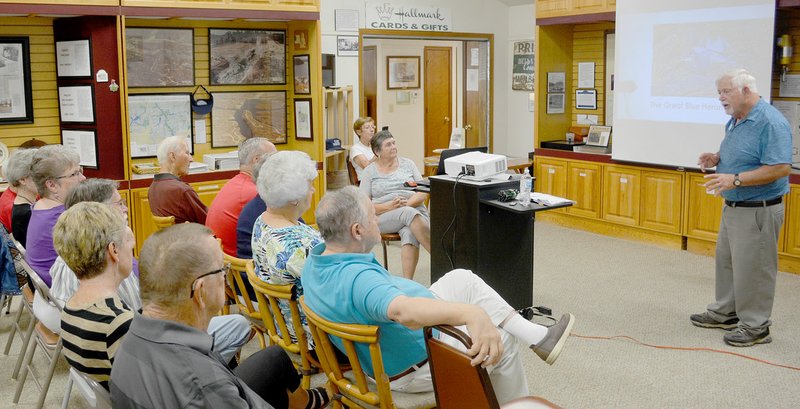Well before sunrise, John Craig is out on a dam looking for starscapes, nighttime landscapes or animals to catch in his camera lens.
Craig says he typically heads out around 3 a.m. each morning, initially focusing on starscapes and landscapes, then shifting to sunrises and animals. He'll typically take around 300 exposures in a day and he's been doing photography off and on for a few years, though he started focusing on it as a full-time gig in March this year, he said.
"I've just got a lot of passion for it," he said.
Out in the field, Craig observes wildlife -- particularly birds -- while he's shooting.
He gave a presentation at the Bella Vista Historical Museum last Sunday highlighting what he's observed of Bella Vista's great blue herons -- tall birds he's been photographing and watching closely.
They nest in groups scattered across tall treetops and the colonies are called rookeries, he explained, which can have between 100 and 300 nesting pairs in a two-square mile area. These same nests are also used by buzzards once the herons leave, he added.
"They like to have the highest trees they can," he said, noting this keeps their young safe from most predators -- though crows often go after their eggs.
From egg to fledgling, he said, is an 89-day process, and young herons receive no care or teaching once they leave the nest -- though if there's enough territory to go around, most herons prefer to stay within two to four miles of where they fledged.
While the birds often spend hours preening, he said, having the patience to observe them and catch them hunting offers a real treat, because each bird has its own approach.
"Because they're not taught how to hunt, they have their own style," Craig said.
Some snagfish in their bills after watching from just above the surface, others use their bills like spears and some fly over the water and dive after their target. Craig noted he even observed one splaying out his wings to create shade and make fish easier to spot, while others appear to wiggle their toes against the lakebed to attract fish.
Their vertebrae can also be moved independently, he said, which allows them to swallow unreasonably large fish.
"The great blue heron truly is great," he concluded.
As a photographer, he said, equipment helps but understanding how to use a camera and how to compose a shot is far more important than having the best gear.
And beyond the gear and knowing how to take the shot, he said, a good photographer needs to be patient. Someone who isn't willing to put in the time is simply unlikely to be present when the best shot presents itself.
Craig sells prints and his work can be seen at https://jlcraigphoto.com.
Historical society president Xyta Lucas said she was pleased to have the presentation, and it's worth noting the museum can host more general interest events, it isn't limited to historical presentations.
It's educational, she said, and gets some people into the museum who may not be aware it's there.
"I personally learned a lot," she said.
Among the roughly 20 attendees was Sheryl Pancratz, who said she appreciated the presentation.
She's a fan of Craig's work, she explained, and especially loves the detail he catches in his shots. She was also impressed with his knowledge, she said.
"It was wonderful. Any time you have a chance to see John's work, you should take it," she said.
General News on 08/21/2019

